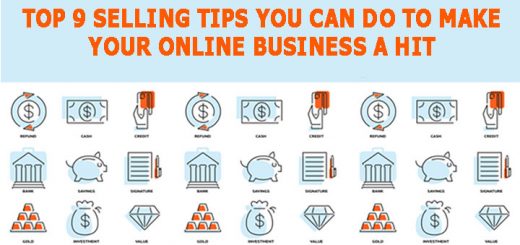9 eCommerce Trends You Need To Know For 2023
E-commerce is always changing. In fact, e-commerce trends are always changing. In 2023, you can expect some big, new trends to hit the market. In this blog post, we’ll take a look at 9 e-commerce trends you need to know for 2023. Keep reading to learn more!
1. Omnichannel is everything
Omnichannel is simply the use of multiple channels (or channels and devices) to interact with a customer. This could include a customer speaking to a human being over the phone, interacting with an online chatbot, or using a virtual assistant to order a product. In addition, omnichannel includes the use of mobile devices to help customers make purchases, schedule appointments, and more. So it allows businesses to reach more customers than ever before. It also allows businesses to provide a better customer experience regardless of the customer’s location. And, it allows businesses to react quickly to customer needs and changes in preferences.
Shoppers in 2023 don’t want to feel like they have to use just one device or channel. They want to be able to look up products, compare prices, make a purchase without any problems across channels and switch between devices without losing their place in the buying process. This means that Omnichannel will be popular in 2023.
As a business owner, it’s important to understand the benefits of omnichannel and how it can benefit your business. By using omnichannel, you can increase your customer base, improve your customer service, and increase your sales. If you’re not using omnichannel in your business, it’s time to start and see the benefits for yourself.
2. Social commerce is growing
Social commerce is growing at an exponential rate, and it’s no surprise that this trend is only going to continue. By using social media platforms like Facebook and Twitter to sell products and services, businesses are able to connect with a wider audience and generate more sales.
3. Customer service has to meet new standards
Customer service has long been seen as a necessary evil, something that companies are forced to offer in order to keep customers. But times are changing, and customer service has to meet new standards if it wants to keep customers.
Your customers want quick answers to their questions, and they want to use channels they’re already familiar with, like WhatsApp, Instagram, and Facebook Messenger. More and more e-commerce businesses are using chatbots so they can provide great customer service around the clock.
Customers also want to be able to return items easily; 67% of shoppers say they look at the return policy before making a purchase. It’s also important to know everything about the order. They want to be able to see where their package is and when it will arrive. It goes without saying that it has to arrive on time.
4. Augmented reality meets e-commerce
Augmented reality (AR) is a technology that allows users to see digital objects within the real world. It’s been used in a number of different contexts, including advertising and product design. Recently, AR has begun to be used in e-commerce applications, allowing shoppers to see products in their own homes.
AR View is a great way for shoppers to get a closer look at products and make purchase decisions without having to leave the online store. It’s also a great way for your bussiness to promote its products to shoppers in a way that’s more engaging and personal.
Read more: The Best Free and Premium Shopify 3D & AR Apps
5. Payment options are multiplying
Shoppers today want to be able to pay easily on any device, using digital wallets like Apple Pay and Google Pay, and sometimes even cryptocurrencies. Online sellers need to accept a variety of payment methods, such as Klarna’s Buy Now, Pay Later (BNPL) service. But if you are a business, it’s important to choose the payment option that is best for your business, so research which one is the best for the situations you’re likely to encounter.
Read more: Why Your Online Store Should Have a Cryptocurrency Payment Gateway in 2023
6. Sustainability is on the shopping list
In 2023, people are much more willing to pay more for products that are good for the environment and look for brands that share their values. Shoppers also look for online stores that sell sustainable or fair trade products, have green or minimal packaging, offer sustainable shipping options, or make it easy to recycle or refill items.
7. Shoppers are looking for second-hand sales
Shoppers are always looking for ways to save money, and second-hand sales are one way they do it. Not only can shoppers find great deals on clothes, furniture, and other items, but they can also find great deals on air purifiers and other home appliances.
8. Personalization
Even though e-commerce has replaced brick-and-mortar stores, people still like getting suggestions from store employees who know their tastes, sizes, and shopping habits. They want the same experience online, with personalized shopping suggestions, deals, and content that speaks to them by name and knows what they like.
9. Mobile shopping
Last but not least, more and more people are shopping on their phones. It’s not a new trend, but in 2023, it’s likely to be more popular than ever. Retail sales through mobile devices are expected to reach close to $4.5 trillion, or 69.9% of all retail sales through e-commerce.
This is why it’s important for online stores to be designed for mobile first, not just responsive or mobile-also. E-commerce businesses also need to use payment methods that work well with phones, like Apple Pay and Google Pay.








